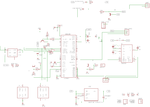GSM Man
Banned
- Joined
- Apr 15, 2009
- Messages
- 670
- Helped
- 168
- Reputation
- 338
- Reaction score
- 94
- Trophy points
- 1,308
- Location
- New Jersey, USA
- Activity points
- 0
I just read an article in one of the trade journals about counterfeit capacitors. You wouldn't think that it would be worth the effort, but some companies are removing caps from recycled electronics and selling them as new. In some cases the are remarking them to indicate they are a different value than they actually are. I'd be leary of anything that is too cheap.Thank you for snapping me out of it. Btw, I found on alibaba a 100uF 0603 MLCC for about $0.1 If I order 25, do you think that its too good to be true, someone told me it is, and I think it might be, but I am just hoping.... https://szgoldtech.en.alibaba.com/p...9/orginal_SMD_capacitors_100uf_6_3V_0603.html
I don't usually prefer one manufacturer over another for passive components. That cap was the first in the search I did looking for a 100uF, MLCC, 6.3V, XR7 dielectric sorted by price.Btw what is the reason you buy your caps from Taiyo Yuden instead of TDK the first one listed, like an ignorant person like me might do? I know (as you could tell) nothing about corporations, but I have learned so much more now just in these few posts.


